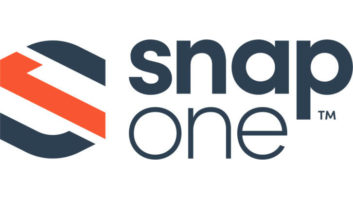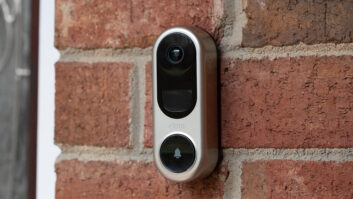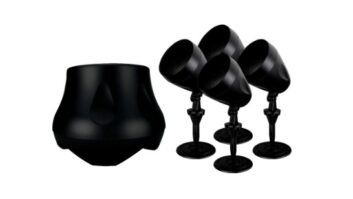Beltsville, MD – Hoping to ride the successful coattails of one-time-use (OTU) film cameras, the Ritz camera chain is rolling out one of the industry’s first OTU digital cameras.
For $10.99, Ritz will offer an OTU digital camera, 25 4 by 6-inch prints and a CD with the images and software.
The camera, manufactured by San Francisco-based Pure Digital Technologies, will carry Ritz’s Dakota Digital brand.
The OTU digital model will be nearly identical to its film counterpart. Consumers who purchase the camera can take up to 25 pictures, which are stored on the camera’s internal memory. They have the option to delete only the last picture they took since the camera doesn’t feature a color LCD.
The camera is then returned to Ritz where the prints will be produced along with a photo CD that holds the images and a software program that will let consumers e-mail photos, create slideshows and create photo greeting cards.
Ritz is rolling out the single-use digital camera to approximately 100 stores in 14 cities including Washington, Baltimore, Atlanta, Philadelphia, Boston, Chicago, San Francisco, and Dallas.
The Pure Digital platform allows retailers to offer low-cost ‘single-use’ digital cameras because the retailer’s server, provided by Pure Digital, does all the ‘heavy lifting,’ said Simon Fleming-Wood, VP of marketing, Pure Digital. The digital camera captures just raw image data (while Fleming-Wood declined to give a resolution, he indicated that the company ‘targets 3-megapixel quality in a 4 by 6-inch print). When the retailer gets the camera returned to them, they connect it to Pure Digital’s server, which then processes the images and sends them to a digital printer.
According to Fleming-Wood, Pure Digital’s server can connect to any digital printer or digital minilab and costs ‘about the same as a photo kiosk.’ The cost of the cameras is separate and varies based on retail volume, Fleming-Wood said, who declined to indicate how much Ritz paid per camera.
Pure Digital’s single-use model has already been tested by the drug store chain Walgreens, under the chain’s Studio 35 brand. The test initially began in its Madison Wisconsin locations but has since been expanded to 100 stores in the greater Wisconsin area. According to a Walgreens spokesman, the company was pleased with the results of its Madison test but has no plans of yet to expand beyond the Wisconsin area.
According to Fleming-Wood, the next generation of the Pure Digital camera platform will feature a color LCD to review images and will be introduced in autumn. The company has also licensed a ‘major digital camera brand’ and will release a camera under that brand in the fall that won’t be tied to a specific retailer, Fleming-Wood said.
OTU cameras have been one bright spot in an otherwise gloomy film market and Pure Digital is hoping to combine the excitement of digital with the popularity and ease of use of the single-use market, Fleming-Wood said.
‘Our model lets the retailer retain the customer and gives them built-in demand for prints,’ Fleming-Wood said, who added that excitement around all things digital will give the product a boost over its film counterpart.
‘Once we add the LCD screen, that will be the game-breaker,’ Fleming-Wood said.
Ritz is rolling out the single-use digital camera to approximately 100 stores in 14 cities including Washington, Baltimore, Atlanta, Philadelphia, Boston, Chicago, San Francisco, and Dallas.
The Pure Digital platform allows retailers to offer low-cost ‘single-use’ digital cameras because the retailer’s server, provided by Pure Digital, does all the ‘heavy lifting,’ said Simon Fleming-Wood, VP of marketing, Pure Digital. The digital camera captures just raw image data. When the retailer gets the camera returned to them, they connect it to Pure Digital’s server, which then processes the images and sends them to a digital printer.
According to Fleming-Wood, Pure Digital’s server can connect to any digital printer or digital minilab and costs ‘about the same as a photo kiosk.’ The cost of the cameras is separate and varies based on retail volume, Fleming-Wood said, who declined to indicate how much Ritz paid per camera.
Pure Digital’s single-use model has already been tested by the drug store chain Walgreens, under the chain’s Studio 35 brand. The test initially began in its Madison Wisconsin locations but has since been expanded to 100 stores in the greater Wisconsin area. According to a Walgreens spokesman, the company was pleased with the results of its Madison test but has no plans of yet to expand beyond the Wisconsin area.
According to Fleming-Wood, the next generation of the Pure Digital camera platform will feature a color LCD to review images and will be introduced in autumn. The company has also licensed a ‘major digital camera brand’ and will release a camera under that brand in the fall that won’t be tied to a specific retailer, Fleming-Wood said.
OTU cameras have been one bright spot in an otherwise gloomy film market and Pure Digital is hoping to combine the excitement of digital with the popularity and ease of use of the single-use market, Fleming-Wood said.
‘Our model lets the retailer retain the customer and gives them built-in demand for prints,’ Fleming-Wood said, who added that excitement around all things digital will give the product a boost over its film counterpart.
‘Once we add the LCD screen, that will be the game-breaker,’ Fleming-Wood said.













